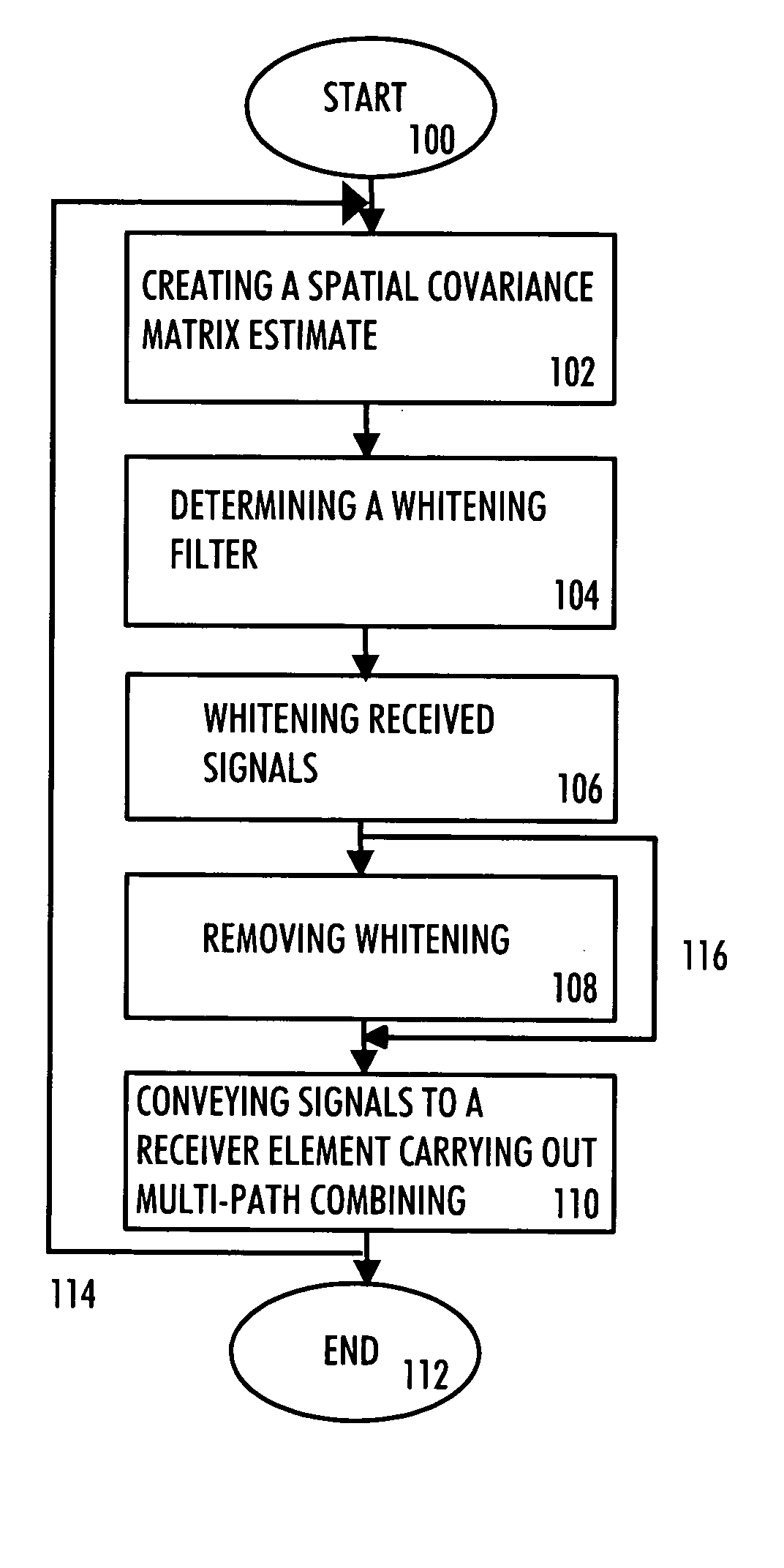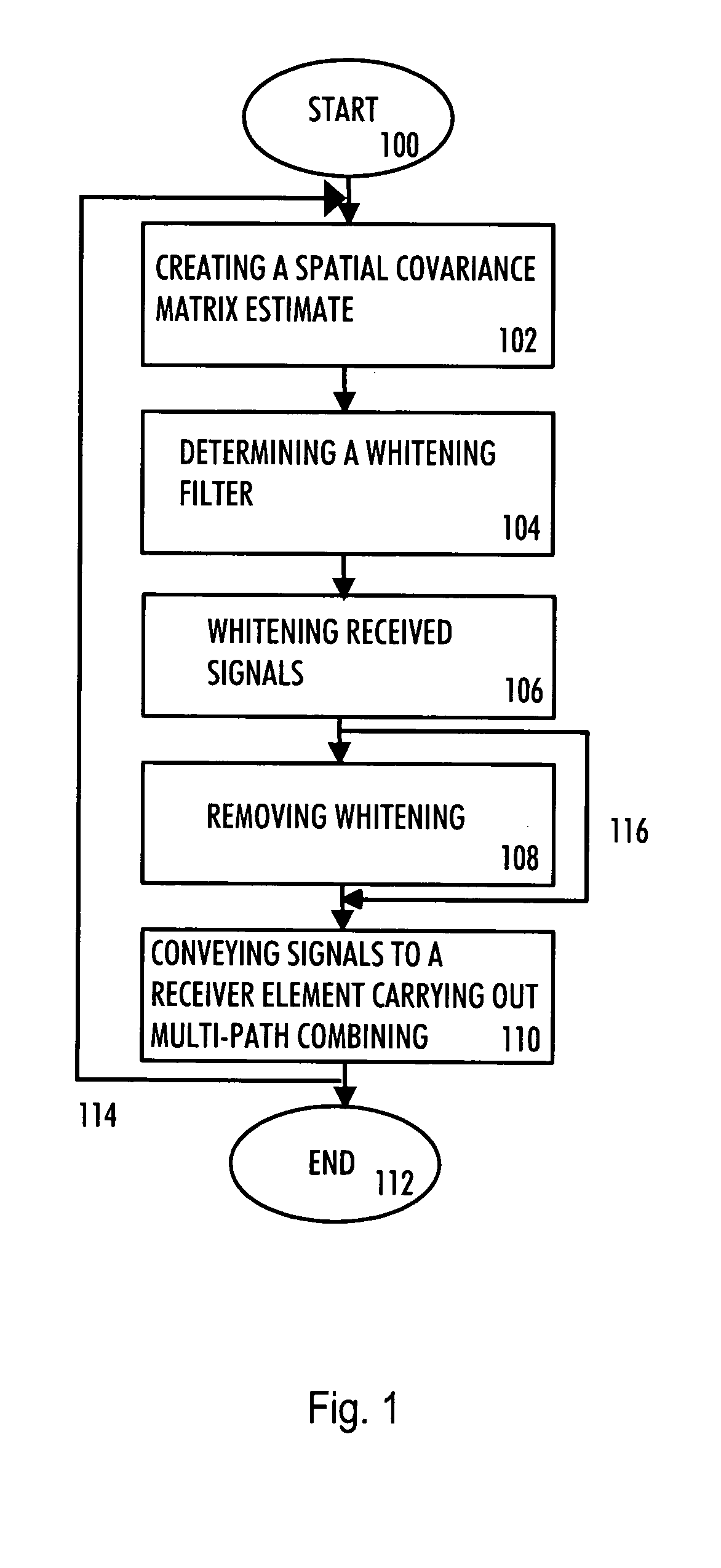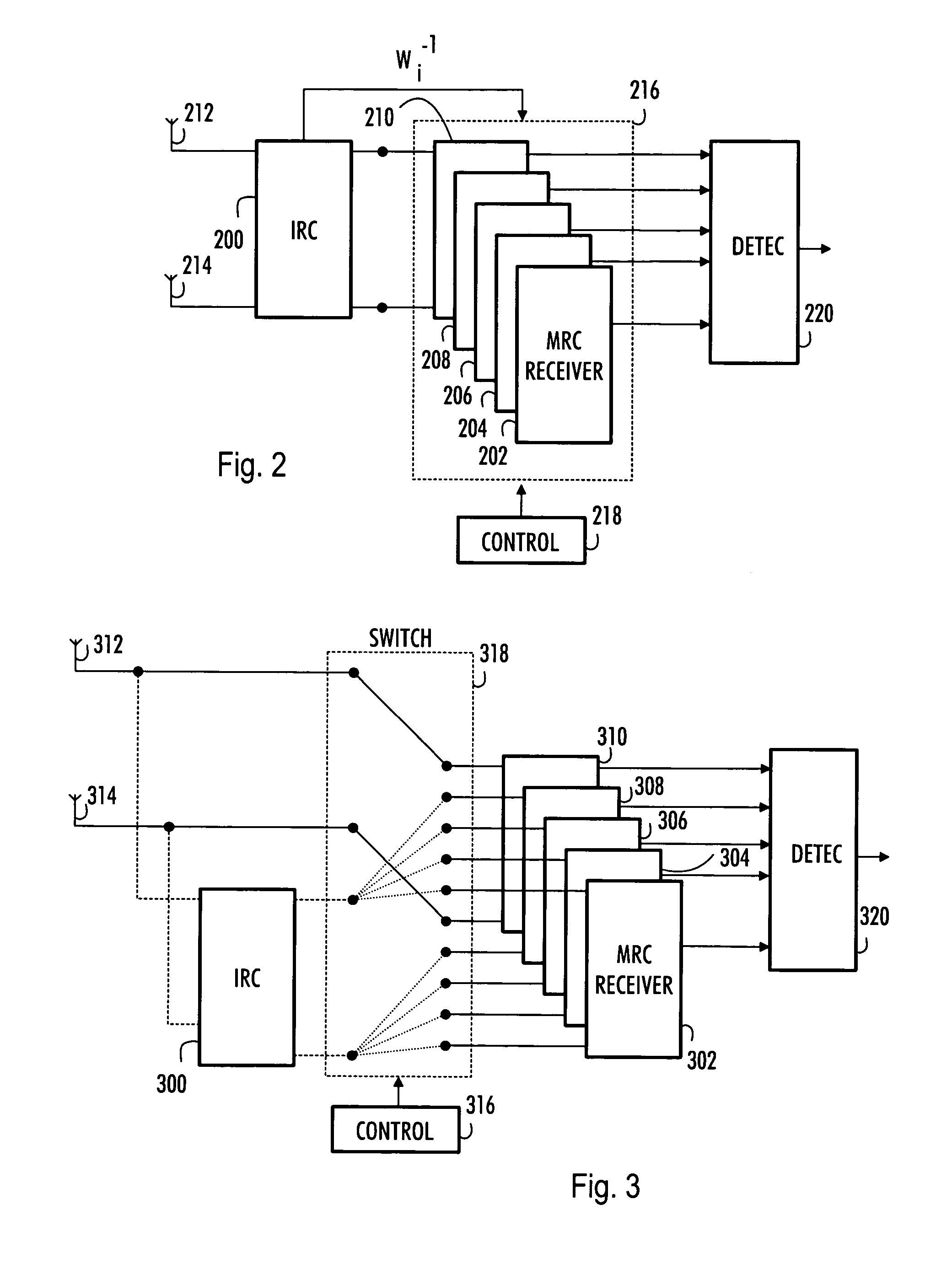Communication method, receiver and base station
a communication method and receiver technology, applied in the field of communication methods, receivers and base stations, can solve the problems of increasing the complexity of receivers, high bit rate users, and the inability to combine antenna signals optimally from high data rate users, so as to reduce the influence of interferen
- Summary
- Abstract
- Description
- Claims
- Application Information
AI Technical Summary
Benefits of technology
Problems solved by technology
Method used
Image
Examples
Embodiment Construction
[0016] With reference to FIG. 1, let us examine an embodiment of a method for reducing the influence of interference in a multi-user receiver. The method may be used in several kinds of radio receivers, such as a base station of a communication system, for instance a base station used in a wide-band code division multiple access system (WCDMA), such as UMTS (universal mobile telecommunications system). The receiver may, for example, be a Rake receiver or a receiver having diversity antennas. The embodiment is directed to a receiver having a pre-whitening filter in the front-end of an MRC receiver.
[0017] The embodiment is especially suitable for systems where there are users having different bit rates, for example, the majority of users use low bit rate services and some users use high bit rate services and the receiver uses several antenna elements. Data rates, which are classified as low or high, vary according to the current system; the data rates tend to increase due to technolo...
PUM
 Login to View More
Login to View More Abstract
Description
Claims
Application Information
 Login to View More
Login to View More - R&D
- Intellectual Property
- Life Sciences
- Materials
- Tech Scout
- Unparalleled Data Quality
- Higher Quality Content
- 60% Fewer Hallucinations
Browse by: Latest US Patents, China's latest patents, Technical Efficacy Thesaurus, Application Domain, Technology Topic, Popular Technical Reports.
© 2025 PatSnap. All rights reserved.Legal|Privacy policy|Modern Slavery Act Transparency Statement|Sitemap|About US| Contact US: help@patsnap.com



